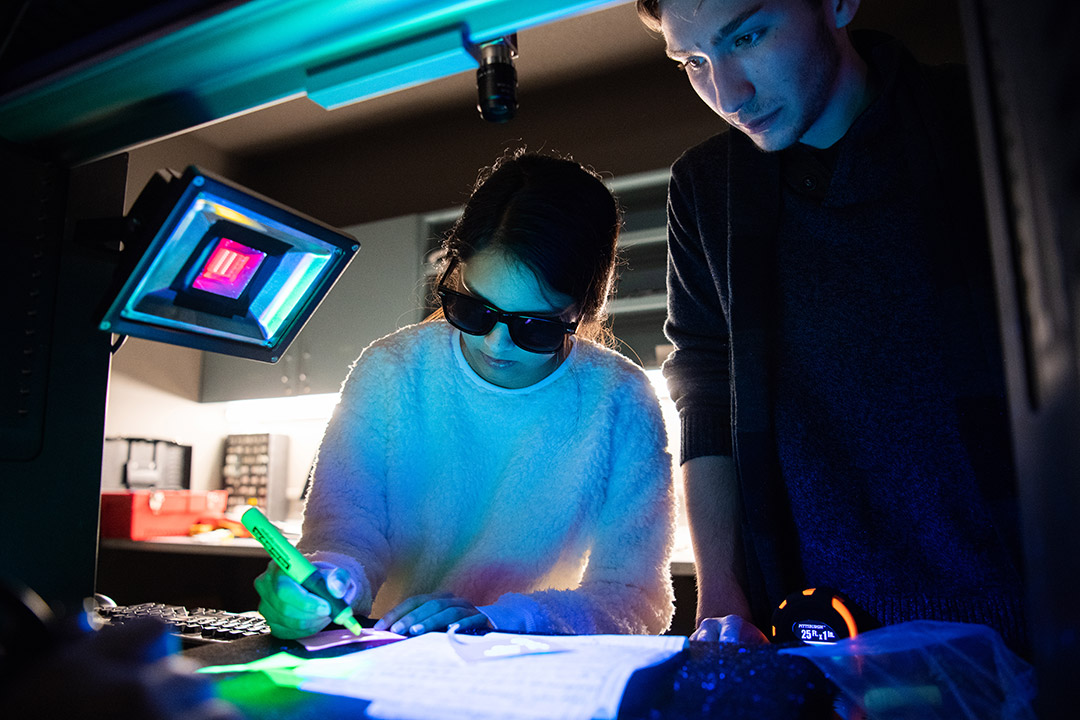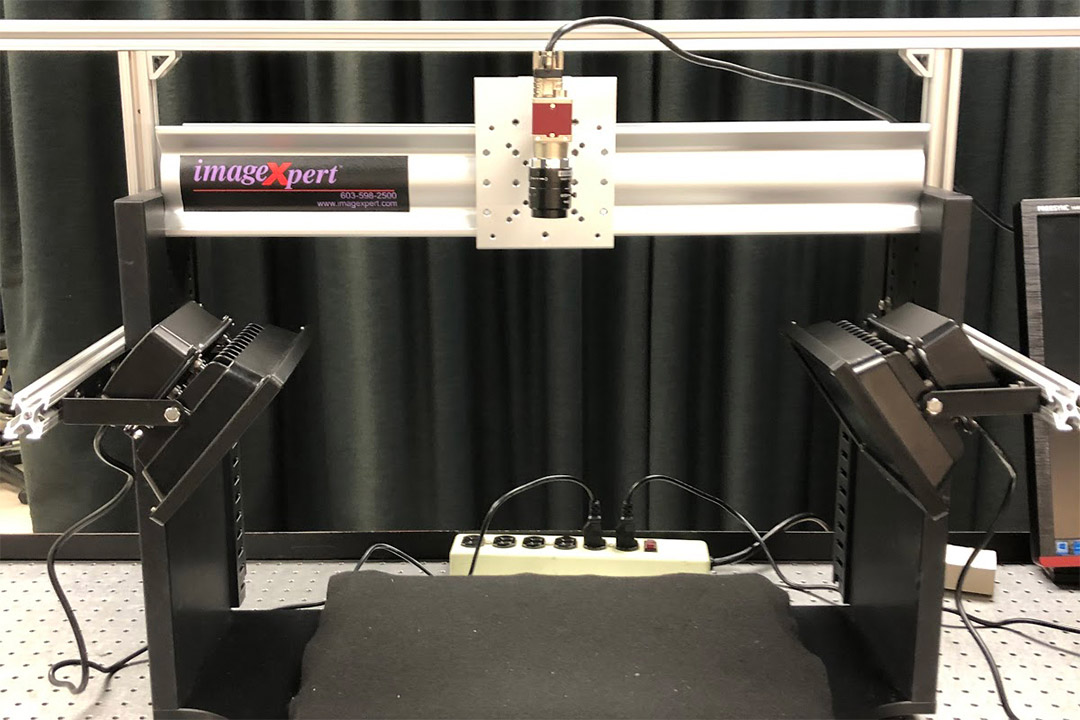First-year students develop imaging system to study historical artifacts
Interdisciplinary team created system for Innovative Freshman Experience class
Gabrielle Plucknette-DeVito
First-year students Lisa Enochs and Andrew Cochrane work on their Innovative Freshman Experience project.
A multidisciplinary team of first-year Rochester Institute of Technology students has been steadily working toward a singular goal since the fall: to develop an imaging system that can reveal information hidden in historical documents.
The students are developing the multispectral imaging system for their Innovative Freshmen Experience project-based course. Nineteen students enrolled in the course from the imaging science, motion picture science, and photographic sciences programs combined their talents and applied their skills to solve the problem presented to them by their instructors in the fall.
Gabrielle Plucknette-DeVito
From left to right, first-year students Imergen Rosario, RJ Pearsall, Lisa Enochs, and Andrew Cochrane worked to develop a system that can be used to study historical artifacts across the spectrum of light.
The original goal was to present their finished product at the Imagine RIT: Creativity and Innovation Festival, but when classes shifted to alternative delivery due to the COVID-19 pandemic in March, their plans had to change. The students left the campus with the device nearly complete, and although they were disappointed they would not have the chance to showcase their hard work to the public in April, they took it in stride and focused on the opportunities the new situation would create.
“Something really valuable that we’ve done in the absence of being able to work on the system in person is integrate more useful workplace skills into our learning,” said Liz Stublen, a first-year photographic sciences student from Richmond, Va. “When we were building the system, a few of us were focused on programming and 3D modeling and now we’ve been able to shift the focus for the whole class to be able to develop their skills in that area. So even though this is not a great situation, we’ve been able to turn things to maximize the benefit from this time.”
Since the shift from in-person instruction, the students broke into four groups focused on creating supplemental materials for the system: a technical manual, an end-user guide, a research paper and a video documentary about the project. Senior Lab Engineer Timothy Bauch, who teaches the class along with the Chester F. Carlson Center for Imaging Science’s Associate Director Karen Braun, said the switch to alternative delivery methods gave the students a chance to round out their skillsets.
Zoë LaLena
Before RIT switched to alternative delivery methods due to the COVID-19 pandemic, the students had nearly completed this imaging system.
“In the normal case for this class, only a handful of students work on data programming, while another handful would be working on 3D modeling, another the mechanical system,” said Bauch. “This will allow everyone to get a bit of a dive into each of those areas. We’re working on some tutorials of using software including Fusion 360, Python, a popular imaging science software package called ENVI, and we’ll do some geospatial tutorials.”
The students decided as a group that they will present the project at Imagine RIT in 2021. And thanks to a donation from Jeffrey Harris '75 (photographic science and instrumentation) and Joyce Pratt, several students received funding to continue to work on the project over the summer.













